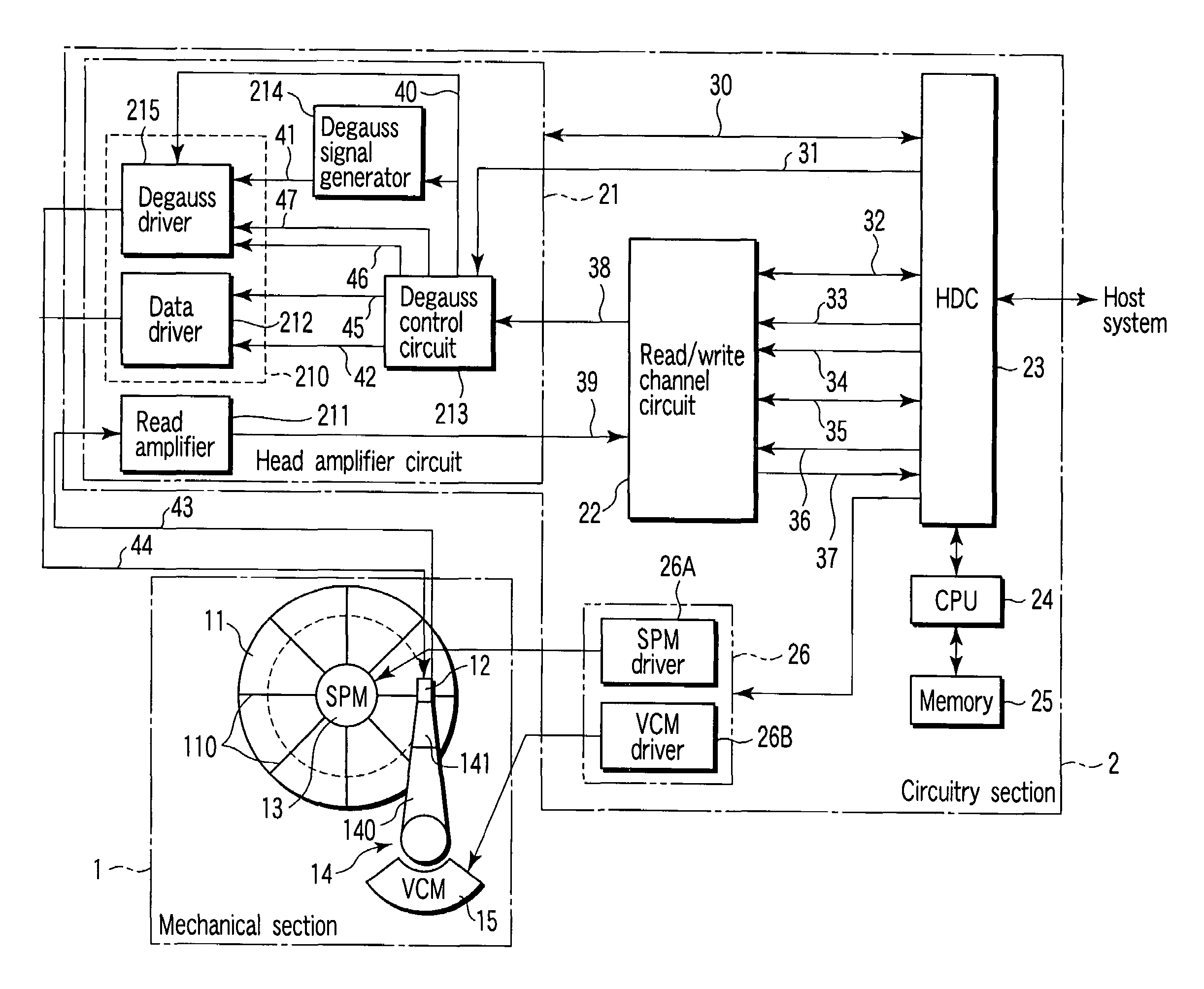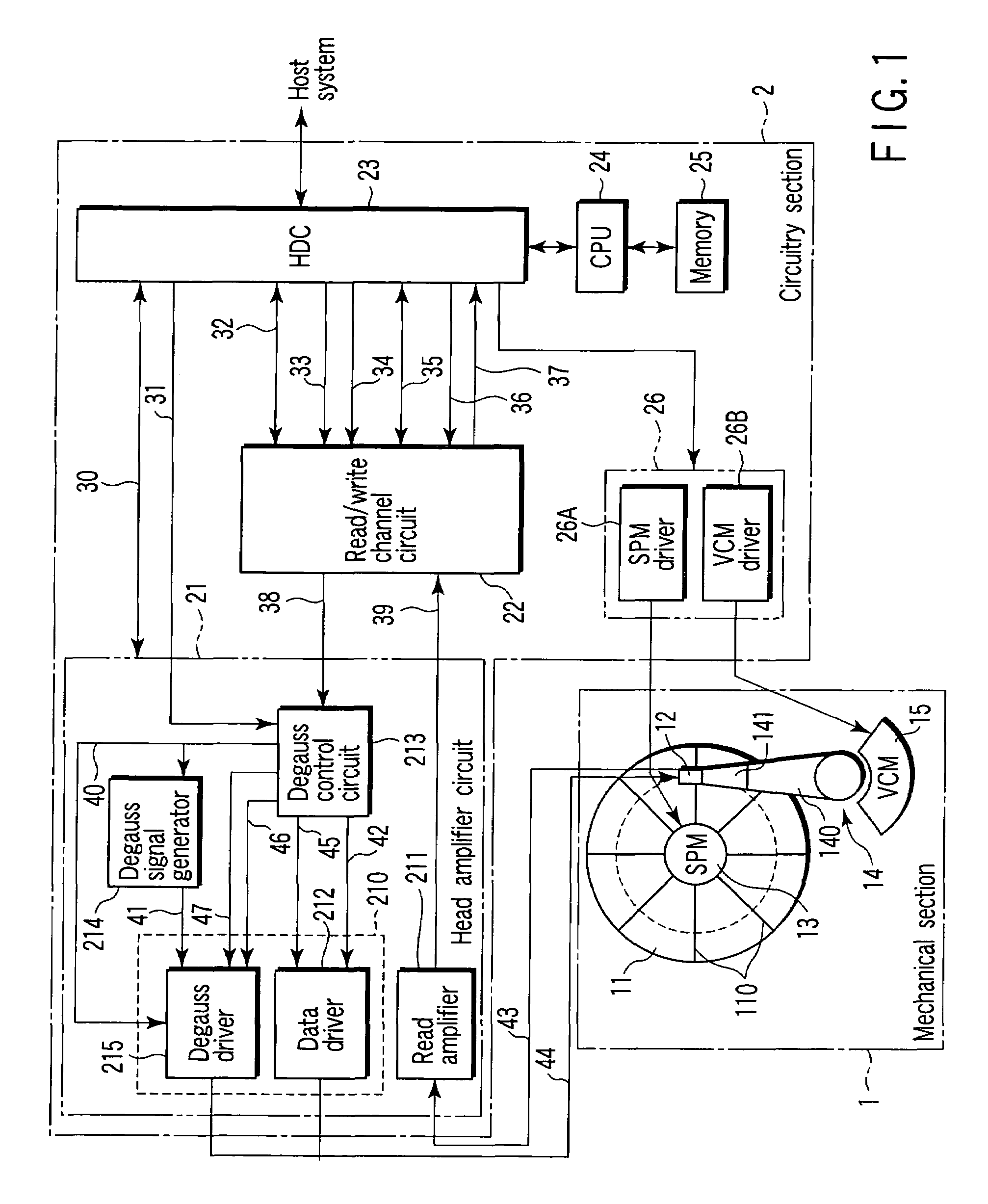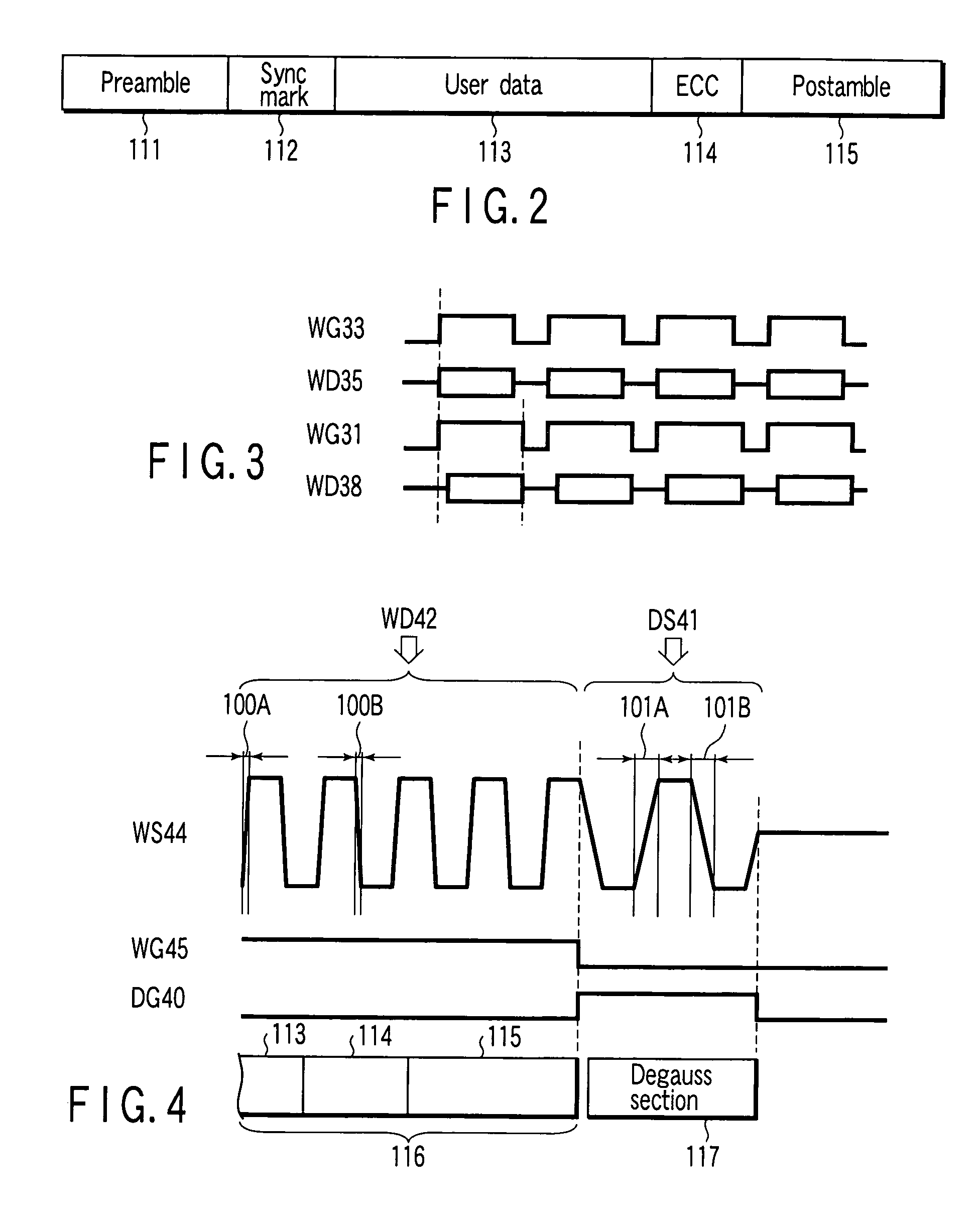Head amplifier circuit with function for degaussing residual magnetism of recording head
a technology of amplifier circuit and residual magnetism, which is applied in the field of hard disk drive with recording head, can solve the problem that the prior art cannot completely eliminate the residual magnetism of recent magnetic heads for high-density recording
- Summary
- Abstract
- Description
- Claims
- Application Information
AI Technical Summary
Benefits of technology
Problems solved by technology
Method used
Image
Examples
first modification
[0056]Referring to FIG. 6, a first modification of the above-described embodiment will be described. FIG. 6 is a timing chart similar to FIG. 4, in which the relationship between WS 44, WG 45 and DG 40 is shown in relation to a data format. In the above embodiment, WS 44 has a constant amplitude when the DG 40 is active. In contrast, in the first modification, WS 44 when DG 40 is active (i.e., WS 44 corresponding to DS 41) has an amplitude envelope shape in which the amplitude is linearly or exponential functionally monotonically decreased. In this modification, Tr 101A and Tf 101B of WS 44 when DG 40 is active are set longer than Tr 100A and Tf 100B of WS 44 corresponding to WD 45, as in the above embodiment.
[0057]That is, the first modification is acquired by combining the above embodiment with one parameter “attenuation configuration”, which is included in the parameters—(1) frequency, (2) period for attenuation and (3) attenuation configuration—employed in the prior art for atte...
second modification
[0059]Referring then to FIG. 7, a second modification of the embodiment will be described. FIG. 7 is a timing chart similar to FIG. 6, in which the relationship between WS 44, WG 45 and DG 40 is shown in relation to a data format. The second modification is characterized in that part of the end portion of the postamble 115 in the write data section 116 is used as the degauss section 117. Therefore, in the second modification, WG 31 is switched by the HDC 23 from the active state to the inactive state at some portion of the postamble 115. In synchronism with the switching of WG 31, DG 40 is switched by the degauss control circuit 213 from the inactive state to the active state at some portion of the postamble 115. Simultaneously, WG 45 is switched by the degauss control circuit 213 from the active state to the inactive state at some portion of the postamble 115. DG 40 is switched to the inactive state at the end of the postamble 115.
[0060]As a result, when WG 45 is active, data corre...
third embodiment
[0062]Referring to FIG. 8, a third modification of the embodiment will be described. FIG. 8 is a timing chart illustrating the relationship between WS 44, WG 45 and WG 47 in relation to a data format. Like the second modification, the third modification is characterized in that part of the end portion of the postamble 115 in the write data section 116 is used as the degauss section 117. The third modification differs from the second modification in that in the former, the data write driver 212 and degauss write driver 215 generate WS 44 using WD 42 and WD 46 corresponding to WD 38 output from the read / write channel circuit 22 to the degauss control circuit 213, respectively.
[0063]Accordingly, in the third modification, when WG 31 is switched from the active state to the inactive state by the HDC 23 at some portion of the postamble 115, not only WG 45 but also WG 47 are controlled by the degauss control circuit 213. Specifically, the degauss control circuit 213 simultaneously switche...
PUM
| Property | Measurement | Unit |
|---|---|---|
| frequency | aaaaa | aaaaa |
| recording current | aaaaa | aaaaa |
| current | aaaaa | aaaaa |
Abstract
Description
Claims
Application Information
 Login to View More
Login to View More - R&D
- Intellectual Property
- Life Sciences
- Materials
- Tech Scout
- Unparalleled Data Quality
- Higher Quality Content
- 60% Fewer Hallucinations
Browse by: Latest US Patents, China's latest patents, Technical Efficacy Thesaurus, Application Domain, Technology Topic, Popular Technical Reports.
© 2025 PatSnap. All rights reserved.Legal|Privacy policy|Modern Slavery Act Transparency Statement|Sitemap|About US| Contact US: help@patsnap.com



